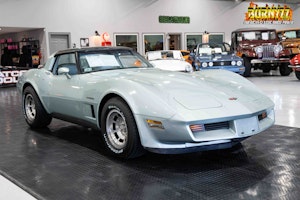Media | Articles
Why electric cars of the future won’t look that much different than the gas cars of today
The future, we’re told, is electric and autonomous. Whether or not that happens—and when—is up for debate. Especially when it comes to autonomous driving. Electric vehicles, however, will surely proliferate in the years ahead, both from corporate initiatives like the Volkswagen Group (which includes Audi and Porsche) promising to bring 50 pure-battery models to market by 2025, and governments like China mandating a percentage of sales.
Electric vehicles, we’re told, offer design flexibility due to the small size of the propulsion motors and the flexibility in positioning batteries. It allows for things like a new VW Microbus that can pass modern crash tests, and the front and rear trunks found in Tesla cars. But by and large, today’s electrics and near-future concepts don’t look all that different from the gas-powered cars of today.
Why is this? Packaging constraints, regulations, and the need to tie future design to past heritage, for the most part. Electric vehicles will evolve from our current automotive shapes.
20180403200450)
Using Jaguar’s fully electric I-Pace as an example, Jaguar Design Director Ian Callum explained the car’s traditional grille. “We decided to put what’s now become a familiar Jaguar front end on this because the rest of the car is so fundamentally different in profile to everything we’ve done before that I wanted to keep some reference to where we’re coming from.” Callum was part of a roundtable discussion on the future of EV design, held at the 2018 Amelia Island Concours d’Elegance. He went on to explain that some fundamentals of car design don’t change. “I think it’s a bit of a misunderstanding that electric cars don’t need to be cooled,” he said, in reference to the importance of managing battery temperatures to maintain longevity.
Marketplace
Buy and sell classics with confidence
And the primary purpose of cars—transporting people—is also a limiting factor. “You still need to fit the people inside a car, and the safest place for that is in the middle. So that’s not going to change,” he said. Add in crash requirements, including rollover, and the structural needs of an EV result in an exterior appearance that’s not far from what you see in showrooms today.
One thing we won’t see is a continuation of the Prius effect, where a car is styled to intentionally call out its unconventional powertrain. Or the Leaf effect, as Nissan design boss Alfonso Albaisa puts it. “When we did the first Leaf, you had to stand out because you needed the car to tell the story, because it’s alone in a big world. But now, this technology is the ambassador for each of our brands. It represents what we can do,” Albaisa said.
20180403200109)
20180403201325)
Michael Simcoe, who heads up General Motors design, agreed. “I think we’re past the need to outwardly identify our designs [as green]. We design vehicles for purpose and sometimes for very specific customers, I don’t think our customers need to have us ‘tag’ them. I think we’re past that as a business.”
There is one fundamental departure that electrics make from the automotive past, and that is the lack of engine noise. For many, the engine and the tune it sings are a central to a car’s identity. And while that might go away, Callum thinks that an EV can still stay true to a brand’s identity. “If you understand the values of the brand and hold to them, it’ll maintain its strength. You’ll be alright. And every brand has a set of values.” At Jaguar, he says, “The values have not changed, and innovation, incidentally, is one of them.”
Recalling the old Jaguar tagline of “Grace…Space…Pace” and his employer’s history of smooth V-12 and inline-six engines, Callum mentions that Jaguars of the past were known for smoothness, much like an EV offers today. He still admits that he’s rather fond of the F-Pace in his home garage and its antisocial V-8 growl. “Traditionally, Jaguars were always very quiet, very serene cars, so we’re taking that back again. That’s my argument, anyway.”
20180403200140)
20180403200153)
But if a snarling exhaust note is endangered when and if electric vehicles become more common, the sports car will live on, Callum insists—even if it will take some effort. ”When you get to electric sports cars, it’s a huge challenge. We’re going through that at the moment, trying to find a way to do it. You cannot do batteries in a sports car the same way [as an SUV] because you don’t have the height. But we will prevail. I think there’s a sense that sports cars may be finished, but I don’t believe they are.”
20180403200355)









